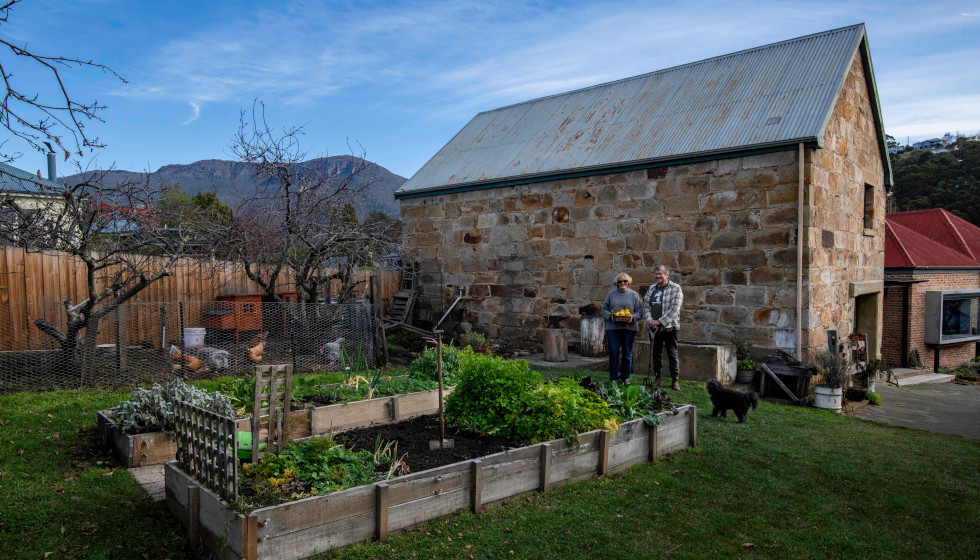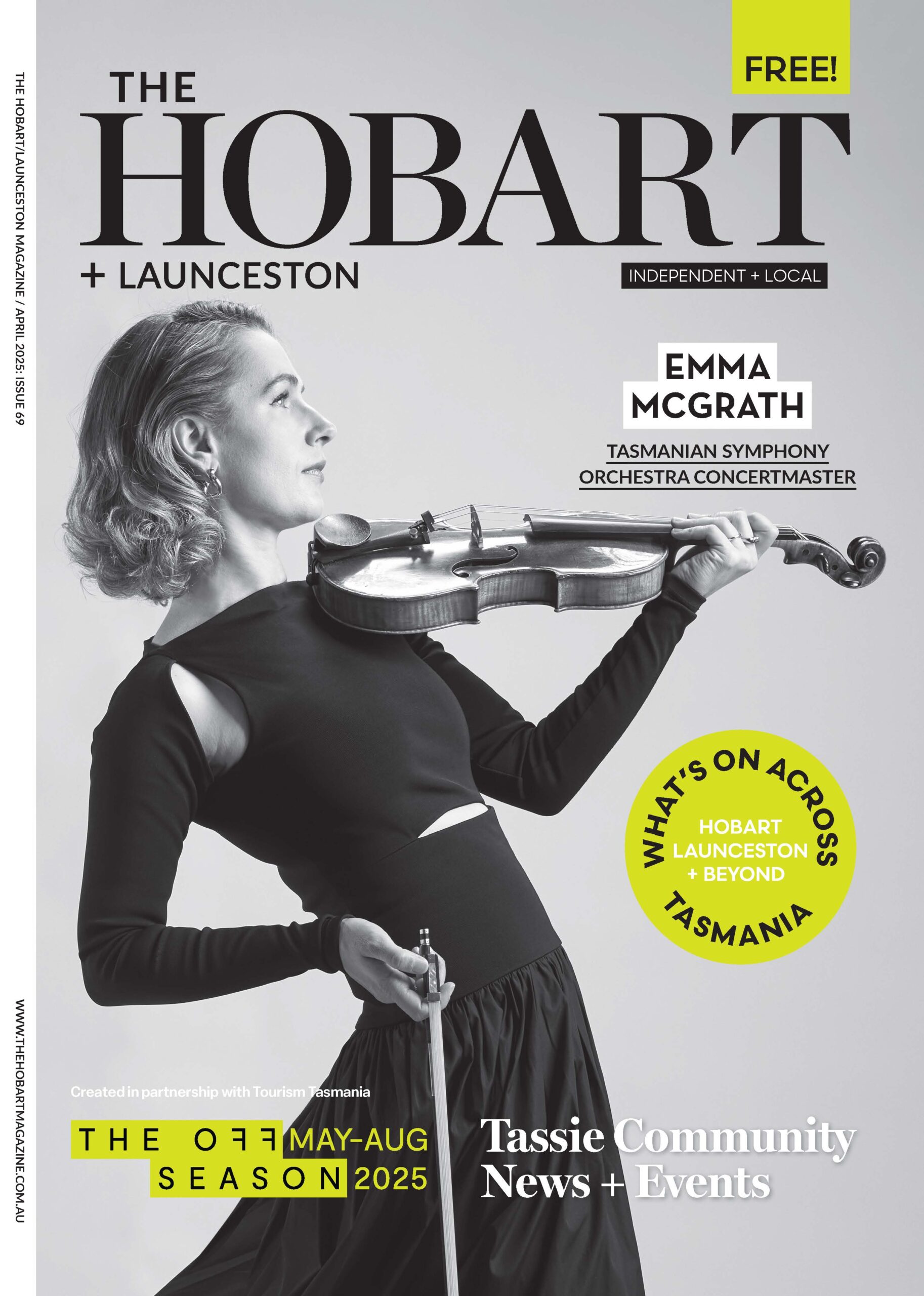Living History: Discovering SOHO
by Hobart Magazine

Discovering SOHO: A Celebration of the South Hobart Community is a new book by Paul County, featuring a series of photographic portraits and personal stories from South Hobart locals. The book weaves together memories from long-time residents, reflecting on the early days of South Hobart, alongside stories from newer arrivals. The portraits and stories will also be showcased in a series of exhibitions at local SoHo cafes throughout the summer of 2024-25. Here’s an excerpt from the book:
Hilary Haeusler says they moved to Tasmania because of a house. “We’d been trying to buy an 1800s-era house in Millers Point in Sydney, but we couldn’t find the right one,” she says. “Our daughter moved to Hobart and when we visited we saw a house at 384 Macquarie Street and loved its potential, with the huge stable out the back and the little cottage.”
Hilary explains that although the owner didn’t really want to sell, they eventually agreed on a price and the move was made. “We wanted to retain as much of the original character as possible,” she says. “Pulling off the render was a wonderful process of exploration!”
The Haeuslers spent four years slowly removing the interior and exterior render, hoping there was sandstone underneath – and indeed there was. “The walls were 70 centimetres thick so the electrician had to go away and buy a longer drill bit,” Hilary laughs.
The original cottage comprised three small rooms facing Macquarie Street, with a small extension added in the 1880s. “During excavation behind the barn, we found a huge sandstone water trough and a blacksmith’s pit, some tiny horse shoes and another pit full of old medicine bottles and pipes,” Christopher says.
In 2018 historian David Young compiled a fascinating history of the house and barn, which were built by two ex-convicts. The first European to hold a secure title to the property was former convict George Lawrence, who was granted land in the area in 1852. He and his ex-convict partner Frederick Moore operated a cartage business there, so the stables at the rear were much larger than the house. “These fellows were real characters,” Hilary says. “One of them was a bit of a rebel and ended up doing hard labour on a road gang. Maybe that’s where he learned his stone masonry skills!”
Lawrence was not well behaved. A mere two months after he arrived in the colony, a drunken spree at Kangaroo Point (where he had no permission to be) resulted in four days on bread and water. Two months later, drinking on a Sunday morning and ‘very disorderly conduct’ led to fourteen days on the treadmill. A month later in January 1833, he absented himself from work for an entire day without leave. For this he received twenty-five lashes. Soon afterwards he was given another thirty-six lashes for being drunk after hours.
The following month he again absented himself from work for a day, this time in possession of four pounds of beef that didn’t belong to him. For this offence the punishment was increased to fifty lashes. Further drunkenness and absenteeism earned more time on the treadmill and in August 1836 he was sentenced to six months’ hard labour in a road party.
Meanwhile, Frederick Moore, a 17-yearold drover from Surrey, was transported to Van Diemen’s Land for fourteen years for ‘stealing from the person’. He arrived in Hobart in April 1829 aboard the Georgiana. His previous offences included stealing a purse and cruelty to sheep. In 1852 George Lawrence sold the property and both he and Moore left Van Diemen’s Land for Victoria – Lawrence to Gippsland and Moore to Geelong.
Over the decades, the property had many colourful owners. During the 1960s and 70s, Leonard Carver used the lower level of the barn as a motor mechanic’s workshop and the upstairs area for boxing training.
Hilary and Christopher have recently added another large room to join the front cottage to the barn. Designed in industrial style with a glass atrium over the dining area, it’s a light and comfortable space with some quirky features such as the excavated horseshoes embedded in the new concrete walls.
They are surprised that the house and stables, built by ex-convicts with no training, are so solid and still standing after 200 years. “The mortar was full of shell fragments and horse hair,” Hilary says. “In colonial times they used shells as a lime substitute. Lime, or ‘quick lime’, is the product obtained by burning shells and coral. This lime is used to make the mortar.”
“We’re both glad that Frederick and George ended up doing well, after their rough start in life,” Christopher says.

